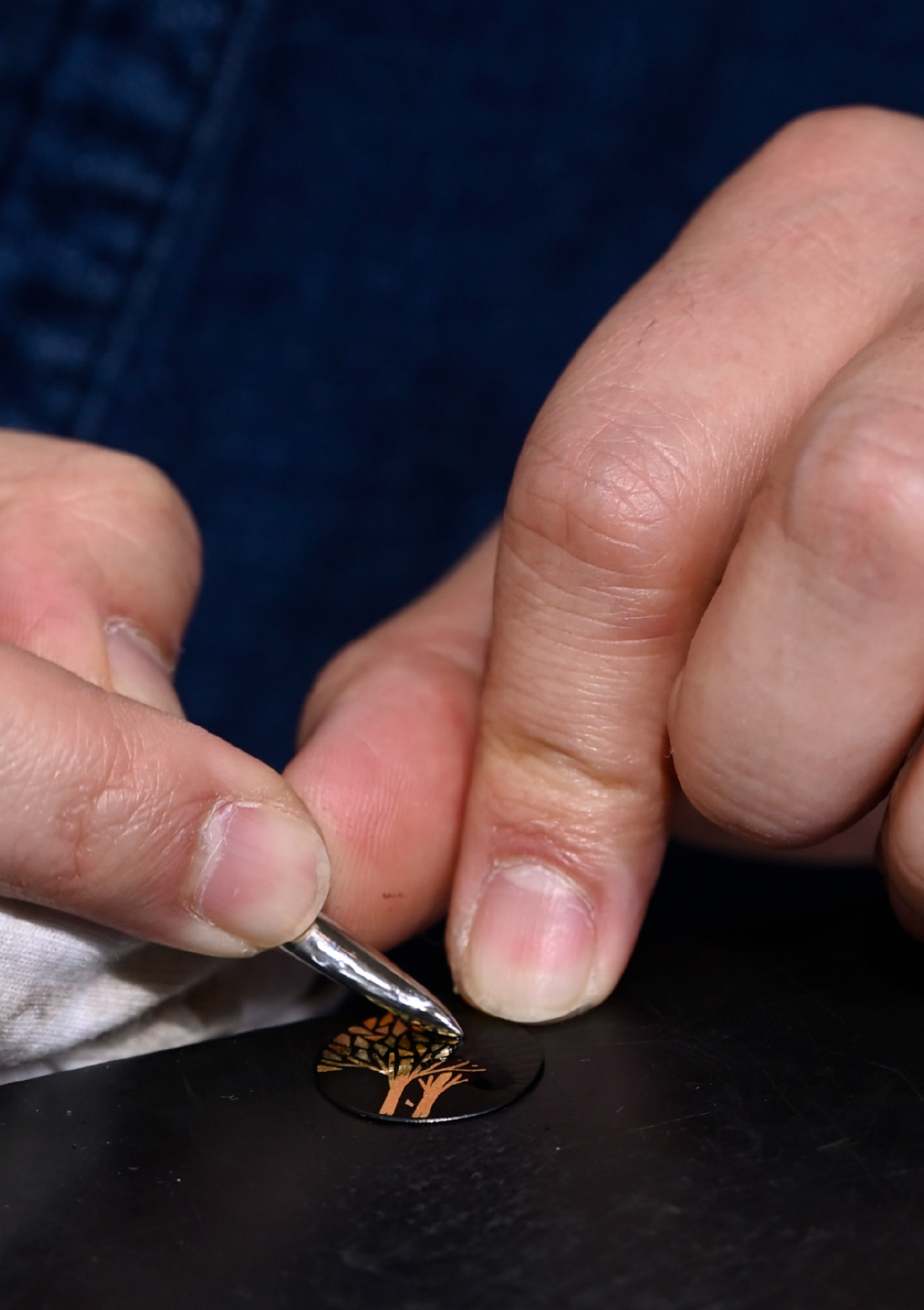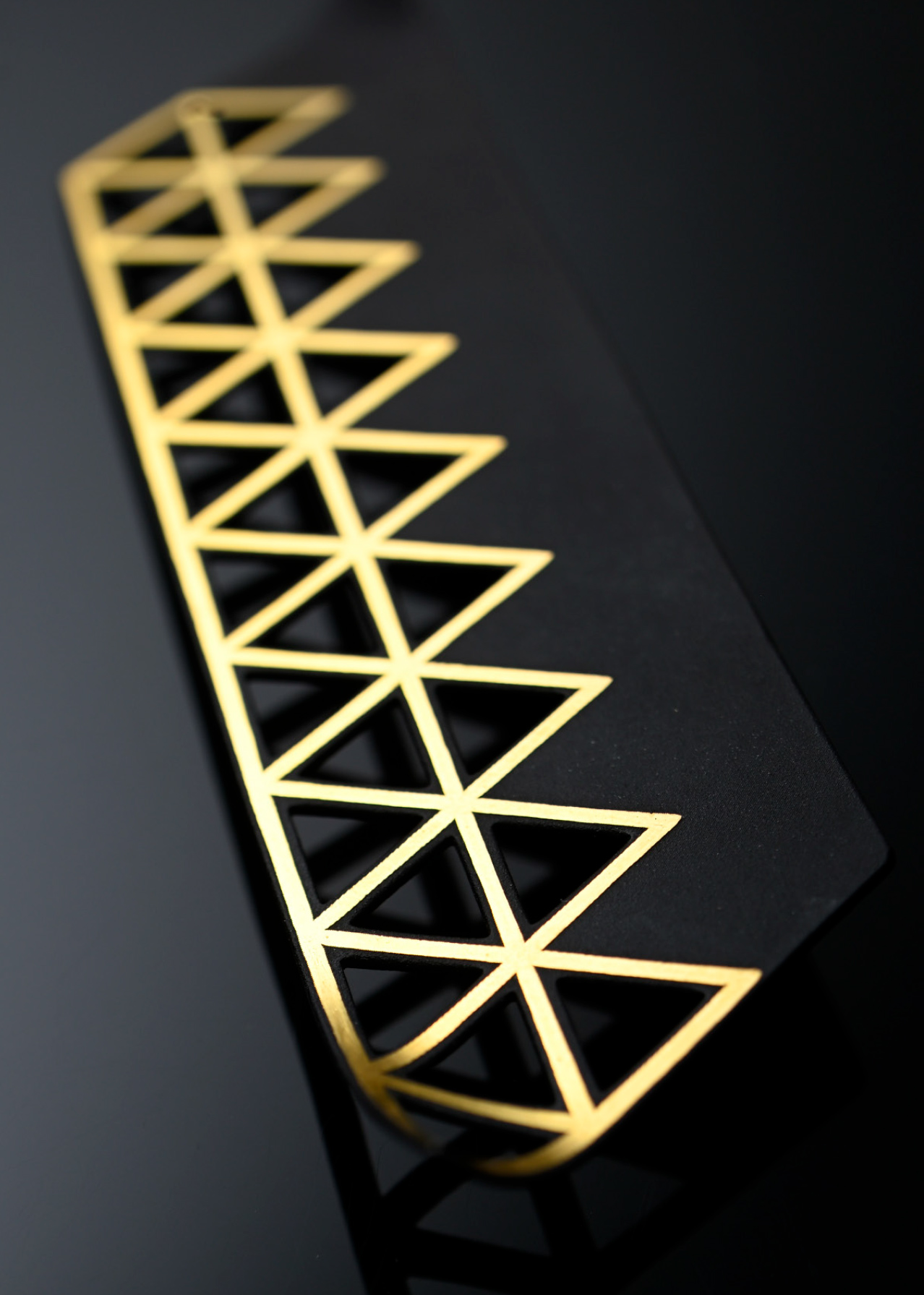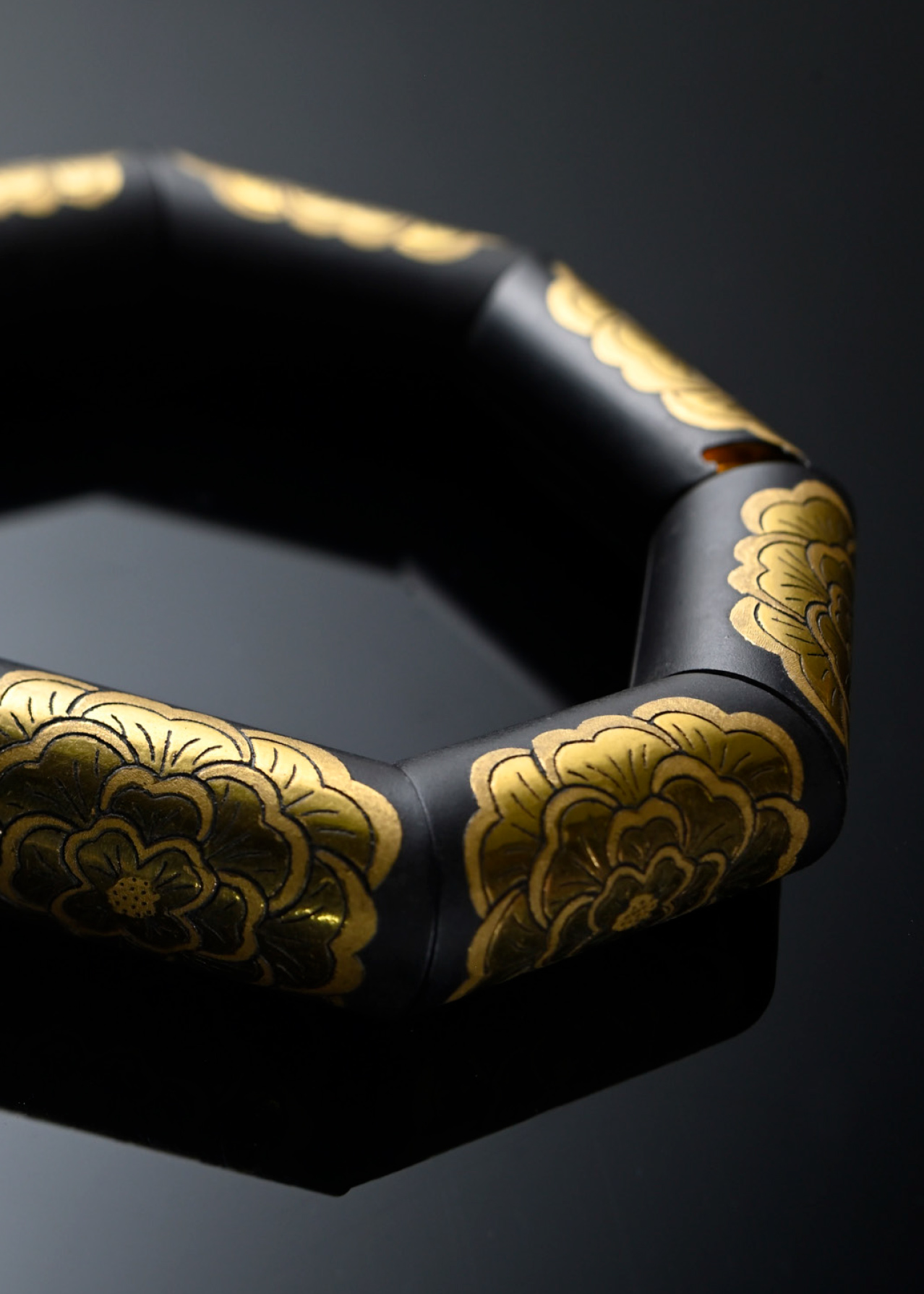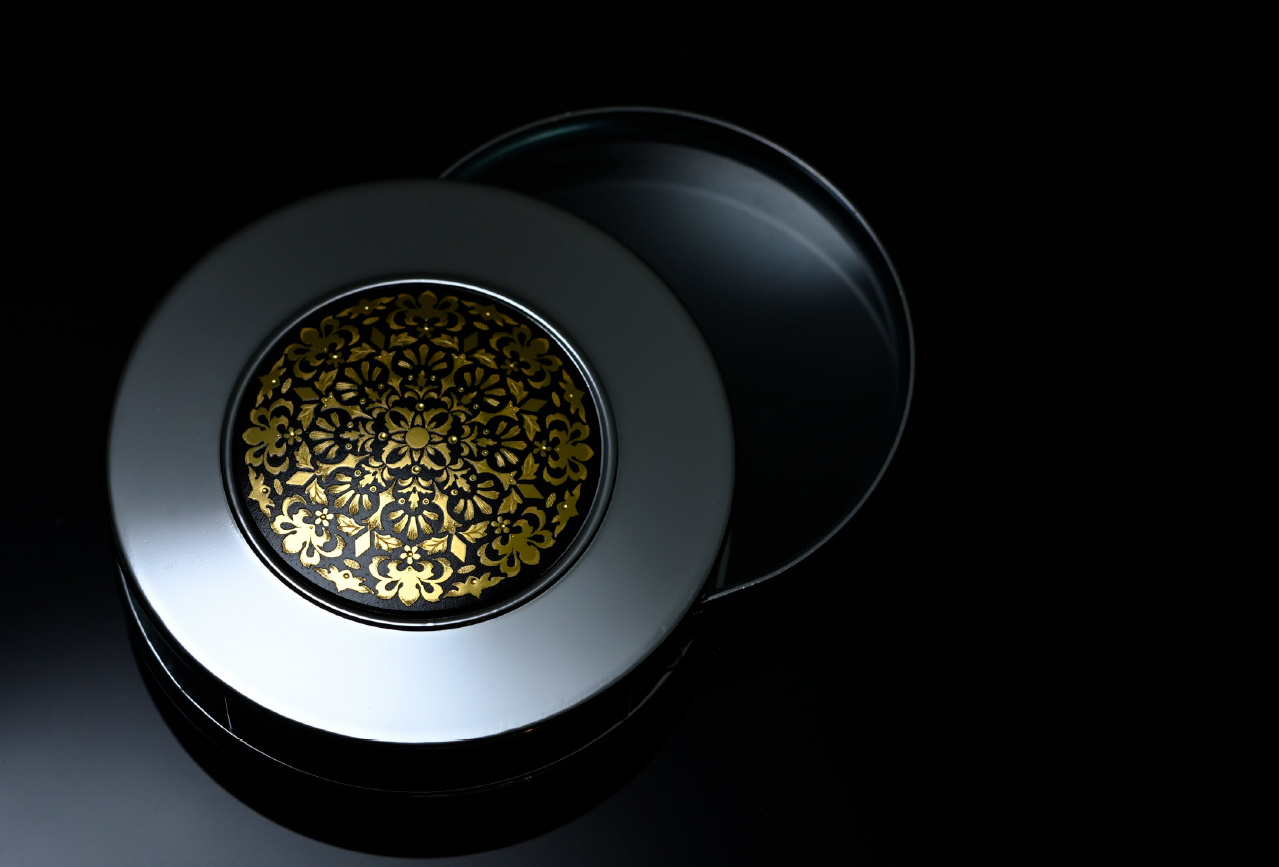京象嵌 協同組合京象嵌協会
KYO-ZOGANINLAYS 1
1
- 職人は専用のルーペで手元を見ながら、ミクロン単位の細かな作業を行う。
象嵌は、異なる素材をはめ込んで模様を表現する装飾技法で、奈良時代(8世紀)にシルクロードを経て、仏教とともに日本に伝えられたといわれています。なかでも、地金に布目のような細かい溝を掘り、その上から金銀の模様を打ち込んで、漆を塗って焼き上げた後に表面を研ぎ、細かい彫刻を施すという繊細で時間を要する仕事が、京象嵌の特徴。古くは仏具や兜、刀の鍔、そして鏡や文箱などに用いられましたが、江戸時代(17世紀)以降はふすまの引き手や火鉢など、一般庶民の暮らしも彩るようになりました。1878年のパリ万博に出品され、黒漆に浮かび上がる金銀の細やかで洗練された模様が高く評価されています。現在も、オリジナルの社員章づくりからアクセサリー、インテリアグッズまで、さまざまなアイテムを彩っています。
Zōgan is an inlay craft that uses different materials such as metal, wood, or ceramic to create decorative patterns. The technique was very possibly introduced to Japan along with Buddhism through the Silk Road in the Nara period (8th century). Kyo-Zōgan is characterized by the delicate and time-consuming work of digging a fine cloth-like groove in metal, imprinting a pattern of gold and silver on it, coating with lacquer and baking it, then sharpening the surface and adding a fine engraving. Until the Edo period, zōgan was employed mostly for Buddhist altars, helmets, sword collars, mirrors, and writing boxes, then gradually began to be used for more ordinary objects such as sliding door pulls and braziers. The delicate and sophisticated patterns of gold and silver emerging on black lacquer were highly praised when presented at the Paris World Exposition of 1878. Today a variety of items are decorated with this traditional technique, including original employee badges, accessories and interior design objects.
 2
2
 3
3
 4
4
- : モダンなデザインのブローチ。
- : 牡丹模様を象嵌したブレスレット。
- : ルーペ。模様の微妙な色の違いは着色ではなく、金属そのものの色合いで表現している。
(1,2,3,4 すべてアミタ株式会社)
1: The craftsman performs detailed work measured in micrometers while looking at the hand using a special loupe. 2: A contemporary design brooch. 3: A bracelet inlaid with a peony pattern. 4: Loupe. The pattern’s subtle differences in color are not painted but expressed by the shade of the metal itself. (1,2,3,4 Amita)

